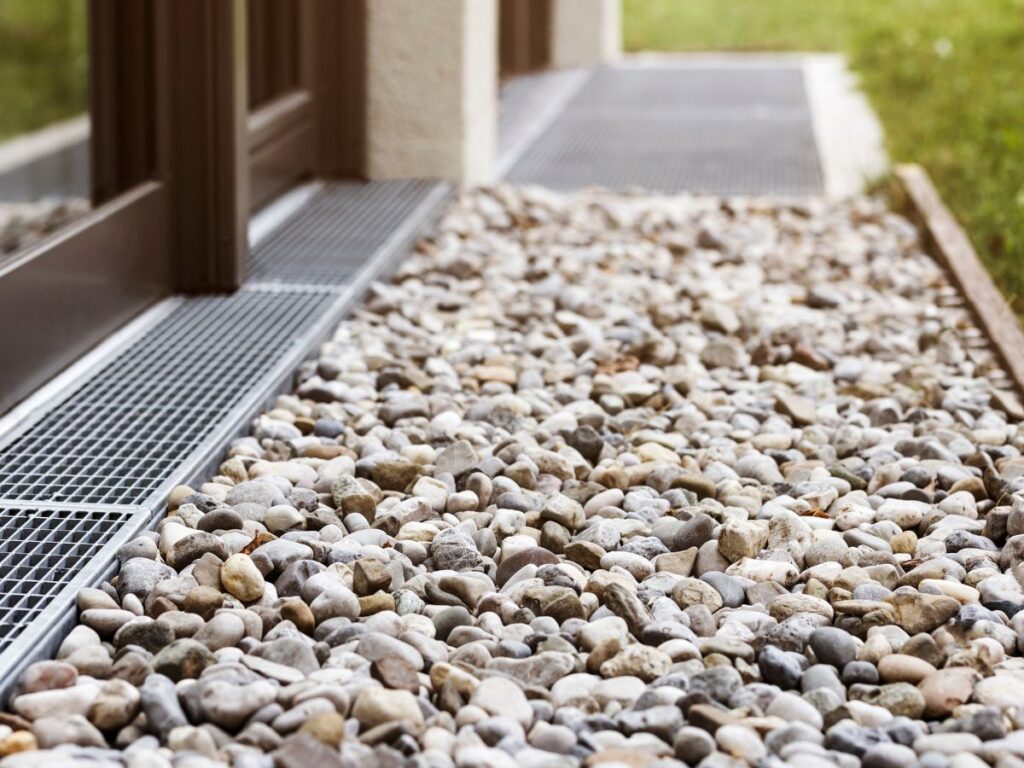Landscaping plays a crucial role in enhancing the aesthetic appeal and market value of your property, but it also necessitates meticulous planning to uphold the effectiveness of vital termite barriers. These protective measures are essential for shielding your home from destructive termite infestations. Unfortunately, some landscaping choices and upkeep routines might unintentionally compromise these barriers, weakening their protective capacity. This comprehensive guide will offer you essential strategies and insights to ensure that your landscaping decisions do not jeopardize your termite defense systems, allowing you to maintain a safe and visually attractive environment around your home.
Discover the Essential Role of Termite Barriers in Protecting Your Home
Termite barriers are specialized defenses, either physical or chemical, that are strategically positioned around or beneath your residence to block termites from infiltrating your property. Every homeowner should prioritize the installation of a comprehensive termite management system. It’s crucial to comprehend the type of barrier currently in place to ensure effective property maintenance. A simple method to verify this information is by checking the documents typically found in your electrical meter box. These barriers are particularly vital in regions like Sydney’s Hills District, where termite activity is notably prevalent, making the need for robust defenses even more critical.
- Physical Barriers: Constructed from durable materials such as stainless steel mesh or graded stones, these barriers are installed beneath a building to effectively thwart termites from tunneling through.
- Chemical Barriers: This approach involves applying liquid termiticides to the soil surrounding a structure, creating a treated zone that effectively deters or eradicates termites from accessing your home.

Recognizing Landscaping Practices That Could Compromise Your Termite Barriers
Numerous common landscaping practices can inadvertently damage or weaken the integrity of your termite barriers, creating significant vulnerabilities that may lead to severe infestations. Gaining an understanding of these practices is essential for maintaining effective protection against termites and ensuring the longevity of your barriers.
1. Planting Too Close to Your Home
When plants, shrubs, or trees are positioned too near your house, they can introduce multiple issues:
- Roots may penetrate physical barriers or disrupt the treated soil in chemical barriers, significantly diminishing their effectiveness and allowing termites to infiltrate.
- Dense vegetation can retain moisture adjacent to the building’s foundation, creating a welcoming environment for termites to thrive and potentially invade your home.
2. Adding New Soil or Mulch
Introducing layers of soil or mulch near the foundation can create a bridge over chemical barriers, allowing termites to bypass these essential protections. Organic mulch is particularly problematic as it can serve as both food and shelter for termites, making it an attractive habitat for these pests and increasing the likelihood of an infestation.
3. Paving and Hardscaping Projects
The installation of paving, patios, or retaining walls near your property can disrupt existing termite barriers. The excavation and soil movement required for these projects might compromise the chemical seal or create gaps in physical barriers, leading to increased vulnerabilities and potential termite access.
4. Irrigation System Considerations
Poorly designed or excessively watered irrigation systems can saturate the soil surrounding your foundation. This not only dilutes the effectiveness of the termiticides in chemical barriers but also fosters a favorable environment for termite proliferation, making it crucial to manage irrigation wisely.

Implementing Landscaping Techniques That Protect Your Termite Barriers
1. Ensure Safe Clearance from Your Home
- Maintain a distance of at least 50 cm between plants and trees and your home’s foundation, creating a safe barrier that protects against termite access and minimizes the risk of infestation.
- Select smaller, non-invasive plants that are less likely to develop extensive root systems capable of interfering with your barriers, thereby promoting better barrier integrity.
2. Choose Termite-Resistant Mulch Options
- Opt for inorganic mulches such as gravel or stone, or consider using termite-resistant materials like cedar or cypress chips to minimize risk and deter termite activity.
- Keep mulch piles to a maximum height of 5 cm and maintain them at least 15 cm away from the foundation to reduce moisture retention, further discouraging termite activity.
3. Avoid Disrupting the Barrier During Landscaping
- Consult with a professional before engaging in any digging or installation of landscaping features near your home to prevent disturbing the termite barriers or termite baits.
- If soil alterations are necessary, it’s advisable to have the barrier reinspected and potentially retreated to ensure ongoing protection against termites, maintaining the integrity of the barriers.
4. Thoughtful Design Considerations
- Position irrigation systems away from the foundation to prevent excessive moisture accumulation near the barrier, which can attract termites and create a conducive environment for infestation.
- Install root barriers for larger trees to prevent roots from encroaching on the termite barrier and causing potential damage, ensuring the barrier’s effectiveness remains intact.
- Be mindful of termite reticulation pipes to avoid damaging them during landscaping activities, which can compromise your termite protection systems.
Crucial Steps to Take If Your Termite Barrier is Compromised
If landscaping activities or natural events have disturbed your termite barrier, taking swift action is essential to protect your home:
- Schedule a Professional Inspection: A thorough termite inspection is crucial to identify vulnerabilities and determine whether termites have breached your protective barriers, allowing for timely intervention.
- Reinforce Your Barrier: Based on the inspection results, physical barriers may need repairs, while chemical barriers might require retreatment or a top-up to restore their effectiveness and ensure ongoing protection.
- Implement Regular Monitoring: Routine inspections for termites are essential to ensure that your barrier remains intact and your property stays protected from infestations, allowing for early detection and effective management.
Innovative Landscaping Solutions That Bolster Your Termite Protection
With thoughtful planning and strategic design, your landscaping can effectively support your termite protection efforts:
- Incorporate gravel paths or decorative stones along the foundation to create a dry zone that deters termite activity and minimizes the risk of infestation.
- Utilize raised garden beds with sufficient clearance from the house to minimize moisture retention near the foundation, further enhancing the protection against termites.
- Regularly trim vegetation to ensure proper ventilation and reduce moisture buildup, creating an inhospitable environment for termites that protects your home.

Landscaping can be designed thoughtfully to enhance, rather than compromise, your termite barriers. By developing a thorough understanding of how various landscape designs impact termite protection, you can achieve a beautiful and pest-free home environment. For expert termite advice or assistance with maintaining your barriers, reach out to our knowledgeable team today. Let us partner with you to secure your home while you create the landscape of your dreams.
The Article: Termite Barriers for Effective Landscaping Solutions first appeared on https://writebuff.com.
The Article Termite Barriers: Essential Solutions for Landscaping Was Found On https://limitsofstrategy.com


5 Responses
This is such an important topic! I remember when I was landscaping my yard, I had no idea how my choices might impact the termite barriers. I went for a lush garden, thinking the greenery would boost curb appeal. But then a friend mentioned that heavy mulch could actually create a bridge for termites. It really made me rethink my approach. I ended up opting for harder surfaces like gravel in some areas to keep things safe but still pretty.
It’s interesting how landscaping decisions can have such a ripple effect, isn’t it? Your experience really highlights how our outdoor choices can impact more than just aesthetics. I totally get the appeal of a lush garden, especially with how much time we spend outdoors these days, especially for mental well-being. It’s almost like a little piece of nature to escape to right in your backyard.
You’ve touched on a really crucial aspect of landscaping that a lot of people don’t think about until it’s too late. The balance between creating an appealing outdoor space and protecting your home from pests like termites can be tricky. Your experience of transitioning from heavy mulch to using gravel is a smart choice. Heavy mulch does have its perks, like moisture retention for plants, but you’re right — it can serve as a perfect bridge for termites to reach the wood of your house.
Ah, the eternal battle between manicured lawns and crafty termites! It feels like I’m choosing between my dream garden and my home not becoming a termite buffet. I once tried to channel my inner landscape artist and ended up planting some beautiful shrubberies, only to realize I might as well have rolled out a red carpet for those little wood-chewers.
It’s such a tricky balance, isn’t it? Trying to cultivate that dream garden while keeping those crafty termites at bay. I totally get your dilemma; it feels almost unfair that our efforts to beautify our spaces can draw in unwanted guests. I once had a similar experience with a gorgeous wooden patio setup that I thought was a fantastic addition, only to find it was an open invitation for termites.